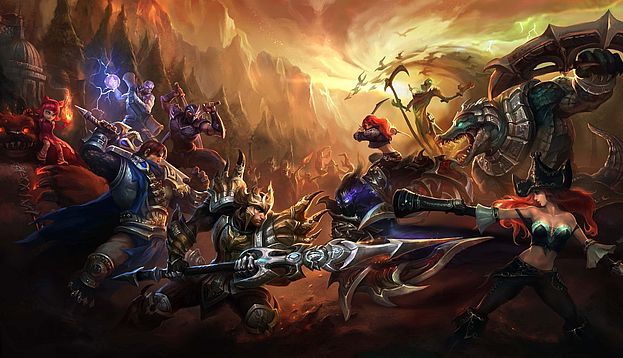A report from VentureBeat indicates that gamers certainly have interesting habits when it comes to their gaming, as they’re still more than willing to invest in a free-to-play title while still downloading full games to their heart’s content on both PCs and consoles.
Insights Meta recently conducted a survey across more than 1,700 gamers, which shows that more than half of those asked continue to download their content through PC and gaming consoles, while 75 percent spent some form of time playing free-to-play titles. In fact, nearly a third of all time spent on video games is geared towards free-to-play in general.
Jason Anderson, the president of Insights, believes that, by the end of the current console life cycle (which will be quite a few years down the road), game sales are likely to emerge from “digital natives,” or gamers who prefer to download their games rather than purchase them at retail. He also noted quite a mixture between both free and fully paid game products, indicating a balance that should bring the industry nearly $25 billion by year’s end.
“That was a surprise for us, how many people were consuming both paid and free-to-play content,” said Anderson. “We were trying to figure out how to segment the free-to-play market, and it was all the same people. This is either a truth that has always been there about free-to-play and its impact on the pay-to-play markets, or the adoption has been very aggressive.”
Out of those surveyed, all but ten percent of core pay-to-play gamers play free content, while more than 80 percent who play free-to-play titles also invest in fully priced games.
The chart below shows this in more detail across four key categories — mobile, console, PC and Subscription. Subscription seems to be at the lowest with 15 percent of those surveyed saying they play them, while the others have percentages wavering from 31 percent all the way to 62 percent, depending on what format they prefer.
Meanwhile, Anderson pointed out the thriving digital download market, with only about 60 percent preferring to play their games in a physical format. “The paid download share is much larger than the people realize,” said Anderson. “Publishers have an understanding of how their own individual titles are performing in that regard. I don’t know that people realize how successful it is becoming across all titles.”
Out of those “digital natives,” Anderson believes a good chunk of them are millennials. “The idea of buying something and downloading it rather than buying a disc is a no-brainer for them,” he explained. “It would be their first preference.”
He also believes this generation is just getting started on buying power as well. “My guess is that at the end of this console cycle, it’ll be the digital natives that drive most of the revenues. It’s a permanent tipping point,” he said.
Meanwhile, as far as a defining leader in the market, consoles make up slightly less than half of all gaming revenue, while the rest comes from the PC side with downloads, retail titles, subscriptions and other services. Free-to-play games, meanwhile, add up to 15 percent of the overall market.
“Those high-consumption players have an impact,” Anderson said. He was surprised to find that the number of gamers playing F2P content on PC was about equal to the number playing on mobile, but said those PC players are frequently core gamers, playing League of Legends, Counter-Strike, and the F2P Battlefield content. Mobile F2P gamers are more diverse.”
More details on the company’s findings, including free console downloads, can be found here.
